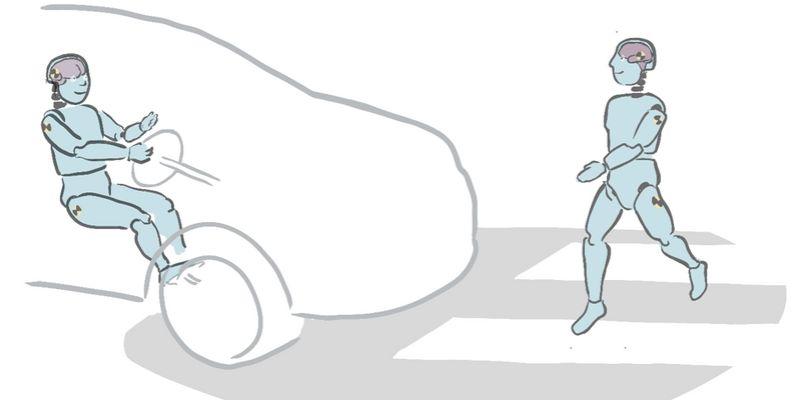Research project
COMMOTIONS (Computational Models of Traffic Interactions for Testing of Automated Vehicles)
- Start date: 1 July 2019
- End date: 31 December 2023
- Funder: EPSRC
- Value: £1.4M
- Primary investigator: Professor Gustav Markkula

Co-investigators: Jac Billington (Psychology), Matteo Leonetti (Computing)
Partners and collaborators: FiveAI, Aimsun
As automated vehicles (AVs) are being developed for driving in increasingly complex and diverse traffic environments, it becomes increasingly difficult to comprehensively test that the AVs always behave in ways that are safe and acceptable to human road users. There is wide consensus that a key part of the solution to this problem will be the use of virtual traffic simulations, where simulated versions of an AV under development can meet simulated surrounding traffic. Such simulations could in theory cover vast ranges of possible scenarios, including both routine and more safety-critical interactions. However, the current understanding and models of human road user behaviour are not good enough to permit realistic simulations of traffic interactions at the level of detail needed for such testing to be meaningful.
This fellowship aims to develop the missing simulation models of human behaviour, to ensure that development of the future automated transport system can be carried out in a responsible, human-centric way. The behaviour of car drivers and pedestrians will be observed both in real traffic as well as in controlled studies in driving and pedestrian simulators, in some cases complementing behavioural data with neurophysiological (EEG) data, since several candidate component models make specific predictions about brain activity.
The fellowship will then build on existing models of driver and pedestrian behaviour in routine and safety-critical situations, and extend these with state of the art neuroscientific models of specific phenomena like perceptual judgments, beliefs about others’ intentions, and communication, to create an integrated cognitive modelling framework allowing simulations of traffic interactions across a variety of targeted scenarios. Such cognitive interaction models, based on well-understood underlying mechanisms, will be one main contribution from the fellowship.
Some researchers have suggested the use of another type of model altogether, instead obtained directly by applying machine learning (ML) methods to large datasets of human road user behaviour, i.e., without an ambition to correctly model underlying mechanisms. This fellowship hypothesises that to achieve reliable virtual testing of AVs, both types of modelling approaches will be needed, and methods for combining them will be researched. Not least, due to their “black box” nature, ML models need to be investigated and benchmarked, to for example determine their ability to generalise to rare, safety-critical events.

